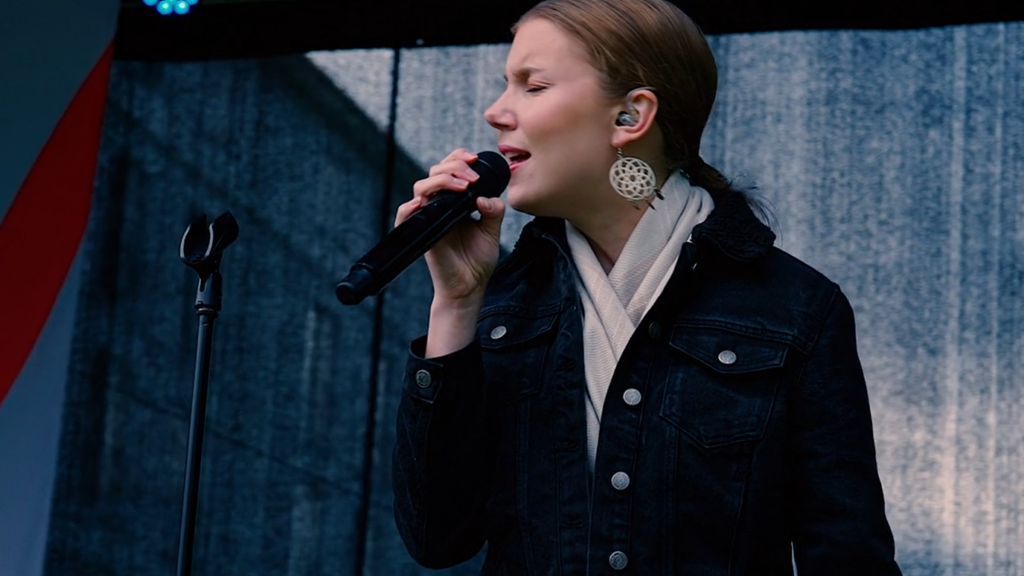
Artists often find themselves balancing the realms of art and activism. The assertion of personal or emerging collective narratives challenges conventional viewpoints. Artists encounter pressures from authorities imposing restrictions and persecution, as well as societal forces. How can they maintain their mental resilience amidst external pressures? What legal frameworks and actual protection mechanisms exist to safeguard artistic expression?
The presumption of freedom of expression extends beyond media to encompass art. The WEXFO 2024 workshop, “Navigating the Pressures: Protecting Artistic Freedom in a Complex Landscape,” brought together artists, activists, and experts to discuss the challenges and solutions for safeguarding artistic expression. The session, collaboratively prepared by NOPA, Mimeta, and Fritt Ord, highlighted the intersection of art and activism, and the pressures artists face from both authorities and societal forces. The session focused on how artistic rights and freedom can occupy a larger space within this rights environment. Why are there poor protection networks for artists, and what can artists learn from journalists and their safety structures?
The panel featured the following artists and experts:
- Ella Marie Hætta Isaksen (independent artist)
- Aaiún Nin (independent artist)
- Peter Ter Velde (founder of PersVeileg)
- Maria Rosario Soraide (UNESCO-Aschberg program)
- Moderator: Laila Bokhari (Director, Yara International)
Moderator Laila Bokhari opened the session. The overarching theme revolved around the challenges artists face in asserting their freedom of expression within a media-centric environment. The discussion aimed to explore how artistic rights can be better protected and how artists can learn from existing safety structures within journalism.
Panel Discussion between the artists Ella Marie Hætta Isaksen and Aaiún Nin:
Ella Marie Hætta Isaksen, particularly acknowledged her privilege as someone of Sami background. Despite facing pressure within her sector due to her activist roles, she emphasized the importance of representing her true self and engaging with issues she cares about. She highlighted the lack of protection networks for artists and shared her experiences of losing followers due to her activism, especially regarding Sami issues. Ella emphasized the necessity of connecting with fellow artists for solidarity and support. Her art served as a platform to address societal injustices, particularly regarding the erasure of the Sami people’s culture and language.
Aaiún Nin, a novelist and visual performance artist, focused on post-colonial and gendered issues in her art. They stressed the significance of not remaining silent in the face of atrocities, as silence perpetuates harm. Aaiún echoed the need for solidarity among artists and emphasized the role of mentorship and support networks in nurturing artistic expression.
The discussion prompted reflections on the importance of solidarity among artists. While there is a strong need for such support, it was noted that organized solidarity is lacking. However, informal connections with fellow artists have provided strength and encouragement. Mentors and role models play a crucial role in supporting emerging artists, highlighting the need for established structures of support within the artistic community.
Presentation by Peter Ter Velde:
Peter shared insights from his experience in establishing protection systems for journalists in the Netherlands. He highlighted the alarming prevalence of threats and violence against journalists, which led to the creation of protocols and safety measures. These included collaboration with law enforcement, training for journalists, and the establishment of a hotline for reporting incidents. Peter also unveiled a new initiative for writers and translators in the Netherlands based on the same approach as “PersVeilig.”
Presentation by Maria Rosario Soraide:
Rosario, drawing from her experience with UNESCO, emphasized the disparity between support structures for journalists and artists. While journalists are often seen as truth-seekers and benefit from established safety measures, artists are often overlooked and lack adequate support. She proposed recommendations for building awareness, collaboration between artists and media, and long-term advocacy for artistic freedom.
Aaiún Nin and Ella Marie Hætta Isaksen reflected on the presentations, noting the importance of raising awareness about existing support networks. They emphasized the need for increased collaboration and advocacy to ensure the protection of artistic freedom.
The panel debate concluded with a call to action for raising awareness, building solidarity, and advocating for the rights and safety of artists in a complex and challenging landscape.
Following the panel discussion of the seminar, participants engaged in workshop sessions focused on various thematic areas related to artistic freedom and safeguarding artists. The workshops aimed to delve deeper into specific issues, identify existing frameworks and initiatives, and explore avenues for collaboration and advocacy within the artistic community.
A range of topics guided the sessions, where participants were divided into four discussion groups:
Explore Lessons from Media Experience and Organizing Artistic Stakeholders
- Lessons learned from journalists/media organizing for freedom of expression.
- Relevance and applicability of these lessons to artistic freedoms.
- Obstacles and possibilities for organizing artistic stakeholders.
- The need for solidarity and effective organization to address challenges.
Frameworks, Initiatives, and Addressing Censorship
- Existing frameworks and initiatives in the artistic realm.
- Strategies to enhance the relevance and efficiency of these frameworks.
- Impact of censorship on artists and ways to address it.
- The need for support to improve awareness of the right to artistic freedom.
Pressing Issues, Solidarity, and Collaborative Platforms
- Short-term and long-term pressing issues related to artistic freedom.
- How to foster solidarity among artists.
- Importance of collaborative platforms for addressing artistic freedom.
- Ownership and responsibilities in addressing common challenges.
Collaboration, Advocacy, and Awareness
- The recommendations highlighted by the UNESCO report on defending artistic freedom.
- Collaboration between artists and organizations to advocate for rights.
- The need for awareness of artists’ specific rights among artists and the public.
- Importance of cross-sectoral cooperation and legal protection.
This summary is provided by Cato Litangen, Director at Mimeta, and was first published at mimeta.org.

